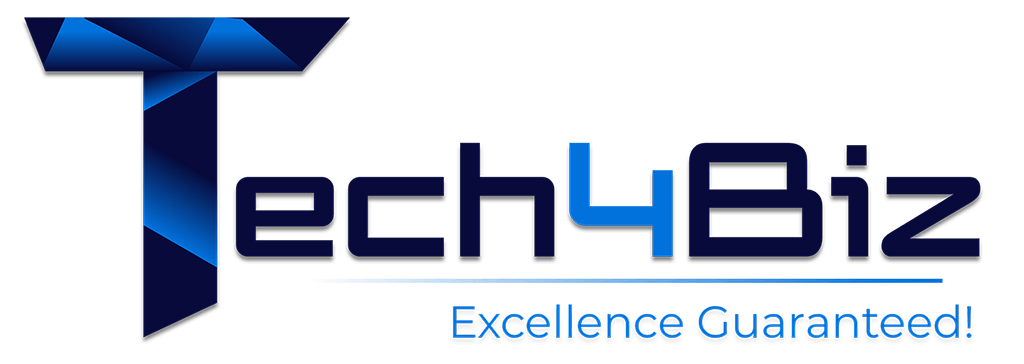The Future of Software Development: Trends to Watch in 2025
As technology continues to evolve at a rapid pace, software development is experiencing a transformative shift. In 2025, we will witness the convergence of new technologies, methodologies, and tools that will revolutionize how software is developed, deployed, and maintained. From AI-driven development to quantum computing, here are some of the key trends shaping the future of software development.
1. AI-Driven Development: The Rise of Intelligent Code
Artificial Intelligence (AI) is no longer just a buzzword; it’s an integral part of software development. In 2025, AI will continue to influence how developers write code, test software, and optimize applications. AI tools will not only help automate repetitive tasks but will also assist developers in creating more efficient and error-free code.
AI-driven development platforms like GitHub Copilot and OpenAI Codex are already showcasing how AI can suggest code snippets, optimize logic, and even write entire functions. In 2025, AI will play an even more significant role by offering real-time bug detection, providing insights into potential vulnerabilities, and even automating the creation of entire applications based on user input.
AI will also enable predictive analytics, helping developers understand how users interact with software and allowing them to proactively fix issues or introduce improvements. This trend will accelerate development cycles and improve the overall quality of software products.
2. Low-Code and No-Code Platforms: Empowering Citizen Developers
Low-code and no-code platforms are democratizing software development. By allowing users with minimal coding experience to create applications through intuitive drag-and-drop interfaces, these platforms are enabling businesses to rapidly develop and deploy software solutions.
In 2025, we can expect low-code platforms to become even more advanced, integrating AI and machine learning to provide automated code generation and customization options. Enterprises will be able to leverage these platforms to develop applications more quickly, reducing the dependency on highly skilled developers for every aspect of app creation.
For startups and small businesses with limited development resources, these platforms will be a game-changer, making it easier for them to create customized solutions without the need for an in-house development team. However, as low-code and no-code platforms become more widespread, it will be essential for businesses to carefully manage governance, security, and scalability to avoid potential pitfalls.
3. Quantum Computing: Unlocking Unprecedented Computing Power
Quantum computing is still in its early stages, but it holds immense potential for the future of software development. By leveraging the principles of quantum mechanics, quantum computers can process vast amounts of data at speeds that traditional computers cannot match. This will have profound implications for industries like healthcare, finance, logistics, and beyond.
In 2025, quantum computing will continue to progress, with companies like IBM, Google, and Microsoft making significant strides in developing quantum hardware and software frameworks. Developers will start to explore how quantum algorithms can be integrated into existing applications, enabling new capabilities such as faster data analysis, more accurate simulations, and more secure cryptography.
While quantum computing is still a few years away from mainstream adoption, software developers will need to start preparing for its arrival. The development of quantum programming languages like Q# and frameworks like IBM’s Qiskit will become more prevalent, allowing developers to experiment with quantum solutions and stay ahead of the curve.
4. Blockchain Technology: Beyond Cryptocurrencies
Blockchain technology, primarily known for its role in cryptocurrencies like Bitcoin, has evolved into a powerful tool for creating decentralized applications (dApps) and smart contracts. In 2025, blockchain will continue to expand its influence beyond the financial sector into areas such as supply chain management, healthcare, identity verification, and more.
Decentralized finance (DeFi) platforms will become more sophisticated, offering developers new ways to create financial applications that operate outside of traditional banking systems. Additionally, blockchain’s ability to ensure data security and immutability will make it an attractive solution for industries dealing with sensitive information, such as healthcare and legal services.
In software development, blockchain will be integrated into enterprise solutions to enhance transparency, traceability, and trust. Developers will need to be familiar with blockchain frameworks like Ethereum, Polkadot, and Solana, as demand for decentralized applications grows.
5. Cloud-Native Development: Accelerating Flexibility and Scalability
Cloud-native development has already transformed how software is built and deployed, and by 2025, it will become the default approach for most organizations. Cloud-native applications are designed to take full advantage of cloud infrastructure, enabling companies to scale rapidly and respond to changing demands with ease.
With the rise of microservices, containers, and Kubernetes, software developers will increasingly adopt cloud-native architectures to build applications that are resilient, scalable, and easily manageable. In 2025, cloud-native development will continue to evolve, with advancements in serverless computing allowing developers to focus solely on writing code, without worrying about infrastructure management.
Additionally, cloud-based development environments and integrated development platforms (IDPs) will become more sophisticated, allowing developers to collaborate seamlessly, test applications in various environments, and deploy software faster.
6. Edge Computing: Bringing Computation Closer to the Source
Edge computing involves processing data closer to where it is generated (e.g., on IoT devices) rather than sending it to a centralized cloud server. As the number of connected devices continues to rise, edge computing will play an essential role in ensuring low-latency processing and real-time decision-making.
By 2025, edge computing will become more mainstream, especially for applications that require fast processing of large amounts of data in real time, such as autonomous vehicles, smart cities, and industrial automation. Developers will need to build applications that can efficiently handle decentralized processing, ensuring seamless communication between edge devices and centralized systems.
Conclusion: Staying Ahead in the Software Development Race
The future of software development is an exciting and dynamic landscape, with ground-breaking technologies such as AI, low-code platforms, quantum computing, and blockchain revolutionizing how we create and interact with software. To stay ahead of the competition, businesses and developers must continuously adapt, embrace new technologies, and invest in skill development.
In 2025, software development will be faster, more intelligent, and more efficient than ever before. By understanding and leveraging these trends, developers can ensure that they’re building applications that are not only cutting-edge but also future-proof, helping businesses stay at the forefront of innovation.
Hey
I'm Emma!

Lorem ipsum dolor sit amet, consectetur adipiscing elit. Ut elit tellus, luctus nec ullamcorper mattis, pulvinar dapibus leo.
